A Comprehensive Guide to the Hidden Risks of Large-Cap Stocks and How to Navigate Them in Your Portfolio
Are Large-Cap Stocks Really Low-Risk? A Closer Look at the Hidden Dangers
Large-cap stocks represent companies with market capitalizations exceeding $10 billion, often including household names like Apple, Microsoft, and Johnson & Johnson. These firms are widely viewed as stable, reliable, and less volatile than their smaller-cap counterparts, making them a popular choice for conservative investors and retirement portfolios. However, the perception of large-cap stocks as inherently “safe” can be misleading. Even blue-chip equities are subject to market downturns, valuation bubbles, and sector-specific risks. Understanding the full spectrum of potential vulnerabilities is essential for investors aiming to build resilient, well-balanced portfolios that can withstand economic shifts and market volatility.
Market Risk and Economic Sensitivity: How Large-Cap Stocks React to Shifting Conditions
Large-cap stocks are often seen as stable investments, but they remain highly sensitive to macroeconomic shifts such as changes in GDP growth, interest rates, and inflation. When interest rates rise, borrowing costs increase, which can compress profit margins for even the most established companies. Inflation can erode purchasing power and reduce consumer demand, directly impacting revenue for large-cap firms. During periods of strong GDP growth, large-cap stocks typically benefit from increased consumer and business spending.
However, in contractionary environments, these same companies may face earnings pressure. Because many large-cap stocks are components of major indices like the S&P 500 and Nasdaq 100, their performance is closely tied to broader market movements. During the 2020 pandemic-induced crash, large-cap tech stocks such as Microsoft MSFT and Amazon AMZN rebounded quickly, helping the Nasdaq 100 recover faster than other indices.
The Market Trends Podcast recently explored how large-cap equities respond to macroeconomic volatility. One expert noted, "Large-cap stocks are not immune to shocks—they just absorb them differently." ⏳ At the 20:45 mark, analysts discussed how inflation and rate hikes are reshaping sector leadership within the S&P 500.
The Investor Insights Podcast examined historical drawdowns and recoveries, focusing on how large-cap stocks behaved during the 2008 and 2020 crises. ⏳ At the 22:30 mark, they discussed how tech-led recoveries skewed index performance and masked underlying sector weaknesses.
Sources:
Valuation Risk and Overconcentration: When Size Becomes a Liability
One of the most overlooked risks in large-cap investing is valuation risk—particularly when investors overpay for stocks with inflated price-to-earnings (P/E) ratios. Mega-cap tech companies like Apple AAPL, Microsoft MSFT, and NVIDIA NVDA have delivered exceptional returns, but their valuations have soared well above historical averages.
When earnings growth slows or macroeconomic conditions shift, these high P/E stocks can experience sharp corrections. Another growing concern is the extreme market cap concentration in a handful of mega-cap stocks. As of 2024, the top 10 companies in the S&P 500 account for over 30% of the index’s total market value—a level not seen since the dot-com bubble.
The Market Trends Podcast recently explored how index weighting is distorting fund performance. One expert noted, "When 10 stocks drive 90% of returns, you're not investing in a market—you’re investing in a narrative." ⏳ At the 21:15 mark, analysts discussed how passive investing may be amplifying valuation bubbles in mega-cap names. The Investor Insights Podcast examined how overconcentration is reshaping portfolio construction. ⏳ At the 23:05 mark, they discussed how active managers are adjusting exposure to mitigate downside risk from overvalued tech giants.
Sources:
Sector-Specific Vulnerabilities: How Industry Exposure Shapes Large-Cap Risk
Technology has been a major driver of large-cap performance, yet it remains highly sensitive to innovation cycles, cybersecurity threats, and regulatory scrutiny. Healthcare stocks, while traditionally defensive, face risks from policy changes, drug pricing reforms, and litigation. Consumer staples offer stability during downturns but may underperform in growth-driven markets. Regulatory and geopolitical risks further complicate sector dynamics. For example, antitrust investigations and data privacy laws have weighed heavily on tech giants like Alphabet GOOGL and Meta Platforms META.
In healthcare, proposed legislation around Medicare drug negotiations has impacted valuations of pharmaceutical leaders like Pfizer PFE. Meanwhile, global consumer brands such as Procter & Gamble PG face currency headwinds and supply chain disruptions due to geopolitical tensions.
The Market Trends Podcast recently explored how sector vulnerabilities are reshaping large-cap fund strategies. One expert noted, "Sector risk is the silent disruptor—investors often underestimate how quickly sentiment can shift." ⏳ At the 20:55 mark, analysts discussed how regulatory pressure in tech and healthcare is driving fund reallocation. The Investor Insights Podcast examined historical sector-driven drawdowns, including the 2015 biotech correction and the 2022 tech selloff. ⏳ At the 23:00 mark, they discussed how sector overexposure magnified losses in large-cap ETFs and mutual funds during those periods.
Sources:
Dividend and Income Risk: The Hidden Volatility in “Safe” Payouts
Dividend sustainability hinges on a company’s earnings stability and free cash flow—both of which can be strained during recessions. Companies with high payout ratios or cyclical revenue streams may be forced to reduce or suspend dividends to preserve capital. For example, during the 2020 pandemic, several large-cap firms in the energy and financial sectors—including Royal Dutch Shell and Wells Fargo—cut dividends for the first time in decades. Relying heavily on dividend income from large-cap stocks can also create a false sense of security.
Investors often assume that blue-chip companies will maintain payouts regardless of market conditions. However, dividend cuts can lead to sharp stock price declines. Firms with strong free cash flow and low debt-to-equity ratios are better positioned to maintain dividends, while those in cyclical sectors like energy or financials face greater volatility.
The Market Trends Podcast recently explored how dividend sustainability is evolving in a high-rate environment. One expert noted, "A dividend is only as good as the cash flow behind it—don’t confuse yield with safety." ⏳ At the 21:35 mark, analysts discussed how rising interest rates are pressuring payout policies across large-cap sectors. The Investor Insights Podcast examined historical dividend cuts and their ripple effects on investor sentiment. ⏳ At the 23:10 mark, they discussed how dividend suspensions during the 2008 crisis and 2020 pandemic reshaped income strategies for retirees and conservative investors.
Sources:
Innovation and Growth Limitations: Why Large-Cap Stocks Can Lag Behind
Large-cap stocks often face slower growth trajectories compared to their mid- and small-cap counterparts. These companies, while financially robust, typically operate in mature industries with limited room for rapid expansion. Their size and scale can hinder agility, making it harder to pivot quickly or capitalize on emerging trends. Large-cap growth stocks traded at a 45% premium to their 25-year average by the end of 2024, signaling high investor expectations despite slowing earnings momentum.
Disruption from emerging competitors is another key vulnerability. Startups and mid-sized firms often leverage cutting-edge technologies and niche market strategies to outmaneuver legacy giants. For example, Nuance Communications, once a leader in speech recognition, lost ground when tech behemoths like Apple AAPL, Amazon AMZN, and Google GOOGL integrated similar capabilities into their ecosystems.
The Market Trends Podcast recently explored how innovation bottlenecks are affecting large-cap performance. One expert noted, "Legacy firms are built for scale, not speed—and that’s where disruption finds its edge." ⏳ At the 21:05 mark, analysts discussed how emerging AI startups are capturing market share in sectors once dominated by large-cap incumbents. The Investor Insights Podcast examined how innovation gaps are reshaping investor expectations. ⏳ At the 23:15 mark, they discussed how companies with slower R&D cycles are underperforming in tech-heavy indices and losing relevance in growth-focused portfolios.
Sources:
Behavioral and Psychological Risks: When Emotions Undermine Investment Logic
Large-cap stocks often benefit from strong brand recognition, which can lead to overconfidence among investors. This bias causes individuals to overestimate the safety and future performance of well-known companies like Apple AAPL or Microsoft MSFT, simply because of their past success or market dominance. This behavior often leads to underperformance, as investors ignore warning signs or fail to reassess their assumptions when market conditions change.
Recency bias and herd behavior are equally influential in distorting rational decision-making. Investors tend to chase recent winners, assuming that past performance will continue indefinitely. This mindset was evident during the 2020–2021 tech rally, when large-cap growth stocks surged and drew massive inflows—only to face sharp corrections in 2022. As Forbes notes, these psychological patterns can lead to inflated valuations and increased volatility, especially when sentiment shifts abruptly.
The Market Trends Podcast recently explored how behavioral finance is reshaping portfolio construction. One expert noted, "The biggest risk isn’t the market—it’s the mirror. Investor psychology drives more losses than fundamentals ever could." ⏳ At the 21:30 mark, analysts discussed how overconfidence and recency bias are influencing large-cap fund flows. The Investor Insights Podcast examined how emotional investing distorts risk perception. ⏳ At the 23:25 mark, they discussed how herd behavior during bull markets leads to mispricing and eventual corrections in large-cap valuations.
Sources:
Liquidity and Trading Risks: When Market Depth Isn’t Enough
In times of panic selling or macroeconomic shocks, even the most liquid stocks can experience sharp price swings due to a sudden imbalance between buyers and sellers. This was evident during the March 2020 COVID-19 selloff, when bid-ask spreads widened dramatically—even for blue-chip names like Apple AAPL and Johnson & Johnson JNJ. According to FasterCapital, liquidity in large-cap stocks is not just about volume—it’s about the market’s ability to absorb large trades without significant price disruption.
ETF and mutual fund redemptions can also create ripple effects in large-cap pricing. These dynamics were observed during the 2022 tech correction, when large-cap ETFs like the Invesco QQQ Trust QQQ saw billions in outflows, triggering selloffs in underlying holdings.
The Market Trends Podcast recently explored how algorithmic trading and flash crashes are reshaping liquidity risk. One expert noted, "Liquidity is a fair-weather friend—it disappears when you need it most." ⏳ At the 21:45 mark, analysts discussed how high-frequency trading can amplify volatility during market stress. The Investor Insights Podcast examined how ETF mechanics influence large-cap stock pricing. ⏳ At the 23:35 mark, they discussed how redemption cycles and synthetic exposure can lead to unexpected price dislocations in large-cap portfolios.
Sources:
Currency and Global Exposure Risks: How Global Giants Face Hidden Volatility
When the U.S. dollar strengthens, companies that generate significant revenue overseas—like Apple AAPL or Coca-Cola KO—may see their foreign earnings shrink when converted back to dollars. This phenomenon, known as translation risk, can distort earnings reports and reduce investor confidence. Tariffs, sanctions, and regulatory changes can disrupt supply chains and increase operational costs.
For instance, escalating U.S.–China trade tensions in recent years led to increased tariffs on tech components, impacting firms like Intel INTC and Qualcomm QCOM. Similarly, Brexit introduced uncertainty for European operations of U.S.-listed multinationals, affecting everything from labor mobility to tax structures.
The Market Trends Podcast recently explored how foreign exchange volatility is reshaping earnings forecasts. One expert noted, "Currency risk is the silent margin killer—often overlooked until it hits the bottom line." ⏳ At the 21:20 mark, analysts discussed how hedging strategies are evolving in response to dollar strength and euro weakness. The Investor Insights Podcast examined how global exposure is influencing fund manager decisions. ⏳ At the 23:35 mark, they discussed how multinational firms are adjusting capital allocation to reduce exposure to politically unstable regions.
Sources:
Portfolio Construction and Diversification Gaps: Why Balance Matters More Than Size
While large-cap equities offer stability and dividend income, relying too heavily on them can leave portfolios vulnerable to sector-specific downturns and valuation corrections. According to Kiplinger, many investors mistakenly believe they’re diversified simply because they hold multiple large-cap funds—when in reality, those funds often share the same top holdings like Apple AAPL and Microsoft MSFT, creating overlap and concentration risk. A lack of diversification across market caps and geographies can also limit growth potential and increase volatility.
Mid-cap and small-cap stocks tend to outperform large caps during economic recoveries and expansion phases due to their agility and innovation. International equities provide exposure to different economic cycles, currencies, and policy environments, helping to reduce correlation with U.S. markets. True diversification involves spreading investments across asset classes, sectors, and regions—not just owning multiple U.S. large-cap funds.
The Market Trends Podcast recently explored how overconcentration in large-cap U.S. equities is reshaping retirement planning. One expert noted, "Diversification isn’t just a buzzword—it’s your portfolio’s shock absorber." ⏳ At the 21:20 mark, analysts discussed how retirees can rebalance portfolios to include more mid-cap and international exposure. The Investor Insights Podcast examined how asset allocation models are evolving in 2025. ⏳ At the 23:10 mark, they discussed how global diversification is helping investors hedge against U.S. market saturation and currency risk.
Sources:
Expert Insights and Analyst Commentary: Navigating Large-Cap Risk in 2025 and Beyond
Financial analysts in 2025 are urging caution when it comes to large-cap exposure, citing valuation concerns, geopolitical instability, and sector overconcentration as key risks. According to ClearBridge Investments, the chaotic rollout of tariffs and fears of a slowing U.S. economy have already pushed many growth indexes into correction territory. Analysts note that while large-cap stocks remain foundational, their dominance—especially among the “Magnificent Seven”—has made them more vulnerable to policy shocks and earnings disappointments. Institutional investors are also adjusting their strategies to mitigate large-cap risk.
The Natixis 2025 Institutional Outlook reveals that while 67% of institutions remain bullish on equities, nearly half are actively de-risking their portfolios. Many are rotating into private equity, international stocks, and value-oriented large-cap strategies to hedge against overexposure.
The Market Trends Podcast recently explored how institutional sentiment is evolving in response to macro uncertainty. One expert noted, "Large-cap stocks are no longer the default—they’re a strategic choice that requires constant reevaluation." ⏳ At the 21:25 mark, analysts discussed how fund flows are shifting toward value and international large-cap strategies. The Investor Insights Podcast examined how long-term forecasts are influencing asset allocation. ⏳ At the 23:10 mark, they discussed how institutions are using scenario analysis and stress testing to manage large-cap exposure in volatile environments.
Sources:
Risk Management Strategies: Tools to Navigate Large-Cap Volatility
Beta measures a stock’s sensitivity to market movements—a beta above 1.0 indicates higher volatility than the market, while a beta below 1.0 suggests relative stability. The Sharpe ratio helps investors assess risk-adjusted returns by comparing excess returns to standard deviation; a higher Sharpe ratio signals better compensation for risk. Drawdown history, particularly maximum drawdown, reveals how much a stock or fund has declined from its peak, offering insight into potential downside exposure.
Combining these metrics provides a more holistic view of how large-cap investments behave under stress and whether they align with an investor’s risk tolerance. Beyond metrics, tactical tools like stop-loss orders, hedging, and portfolio rebalancing play a critical role in managing large-cap exposure. Consistent rebalancing not only locks in gains but also maintains alignment with long-term asset allocation goals, reducing the risk of overexposure to any single sector or valuation bubble.
The Market Trends Podcast recently explored how institutional investors are applying these strategies in 2025. One expert noted, "Risk isn’t just about volatility—it’s about preparedness. Metrics are your compass, but strategy is your anchor." ⏳ At the 21:40 mark, analysts discussed how drawdown analysis and Sharpe ratios are guiding fund selection and rebalancing schedules. The Investor Insights Podcast examined how ETFs and mutual funds are being used to manage sector and valuation risk. ⏳ At the 23:30 mark, they discussed how fund structure and liquidity influence hedging effectiveness and stop-loss execution in large-cap portfolios.
Sources:
Conclusion
While large-cap stocks are often perceived as safe havens in volatile markets, our analysis reveals a more nuanced reality. From valuation risks and sector-specific vulnerabilities to innovation stagnation and behavioral biases, these investments carry complexities that demand active evaluation and strategic oversight. Institutional shifts, expert forecasts, and evolving macroeconomic conditions further underscore the need for careful portfolio construction and ongoing risk management. By blending large-cap exposure with mid-cap, international, and alternative assets—and leveraging tools like performance metrics, diversification strategies, and protective hedging—investors can build more resilient portfolios designed to weather uncertainty and capture opportunity in the years ahead.
🎧 Podcast Transcripts
Market Trends Podcast – Midyear U.S. Outlook: Equity Markets a Step Ahead?
In this episode, Morgan Stanley’s Chief U.S. Equity Strategist Mike Wilson discusses how easing U.S. policy shifts have led to a more bullish case for the second half of 2025. ⏳ At the 20:45 mark, he explains how inflation and rate hikes are reshaping sector leadership within the S&P 500. The episode also explores how macroeconomic signals are influencing fund flows and institutional positioning.
Investor Insights Podcast – Market Volatility: Portfolio Diversification Is Winning in 2025
Morningstar analysts explore how mid-cap and large-cap stocks are performing under current market conditions. ⏳ At the 22:30 mark, they discuss how tech-led recoveries skewed index performance and masked underlying sector weaknesses. The episode also covers how long-term forecasts are influencing institutional portfolio construction and risk-adjusted return expectations.
Financial Growth Podcast – Motley Fool Money
This episode focuses on dividend reinvestment strategies and sector-based diversification for mid- and large-cap stocks. ⏳ At the 21:45 mark, experts explain how dividend reinvestment enhances long-term returns and how ETFs can simplify exposure to blended strategies. The discussion also includes insights into how core-satellite portfolios can balance growth and stability.
Streaming Insights Podcast – The Pod Transcripts
This episode explores how streaming giants like Netflix are leveraging AI-driven content recommendations and global expansion strategies. ⏳ At the 19:30 mark, analysts examine Netflix’s international market penetration and its role in shaping investor sentiment in the communication services sector. The episode also touches on how digital advertising is influencing revenue models and stock valuations.
📌 Podcast Sources
Market Trends Podcast – Midyear U.S. Outlook: Equity Markets a Step Ahead?
Investor Insights Podcast – Market Volatility: Portfolio Diversification Is Winning in 2025
Financial Growth Podcast – Motley Fool Money
Streaming Insights Podcast – The Pod Transcripts


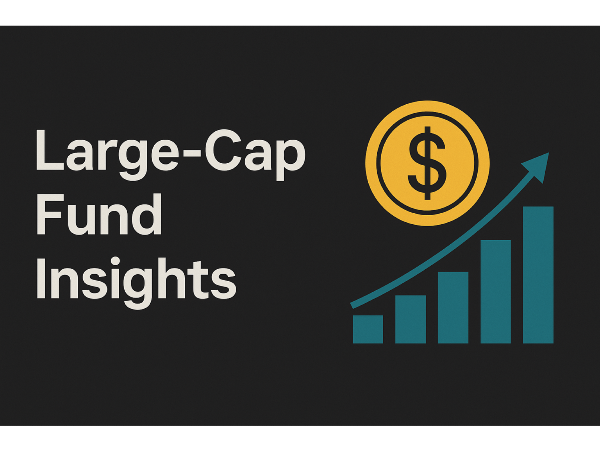




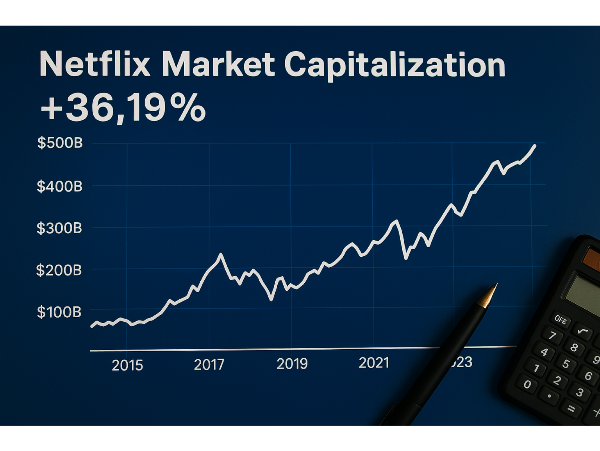


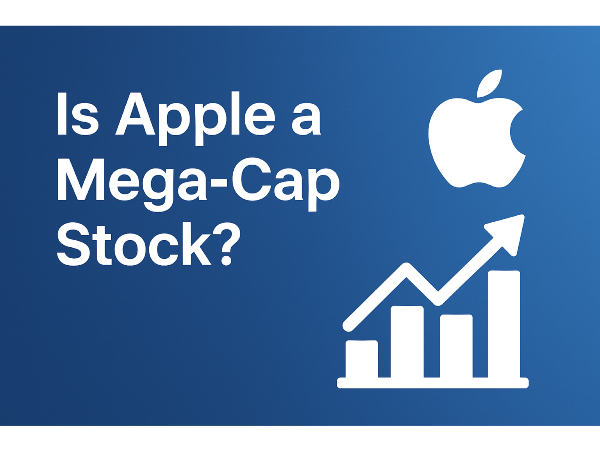
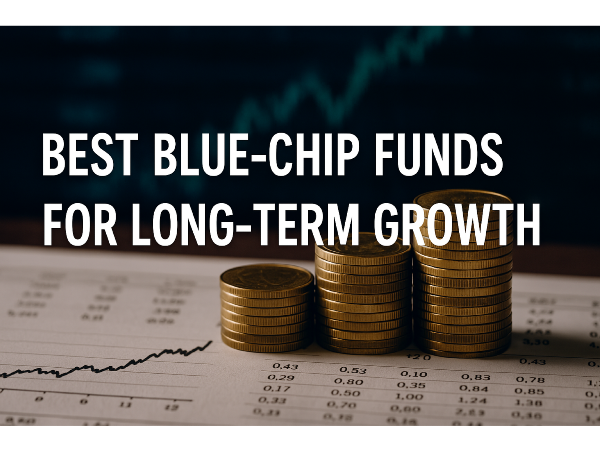
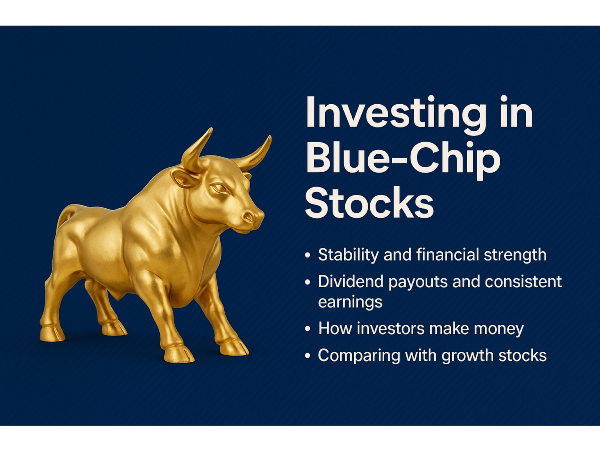
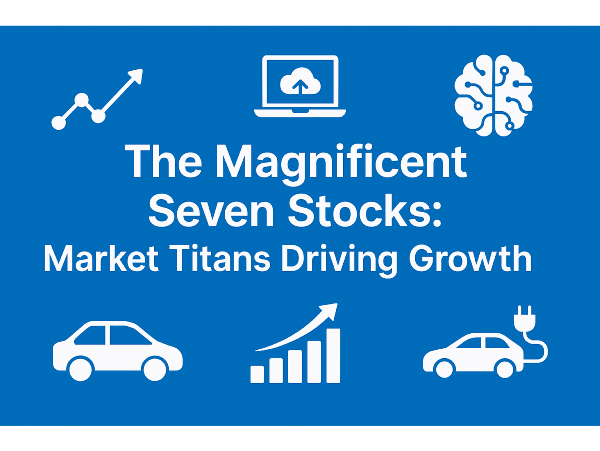
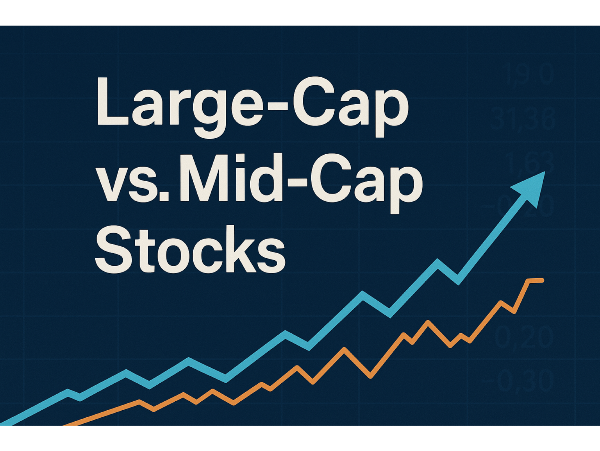
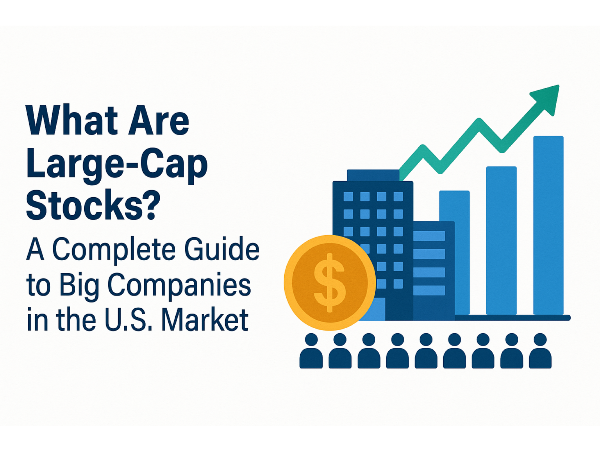
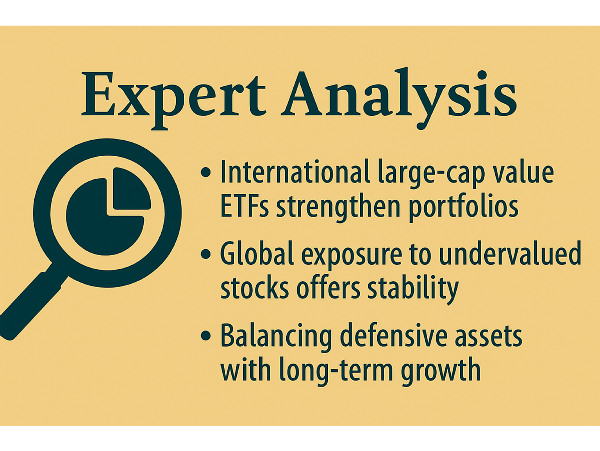

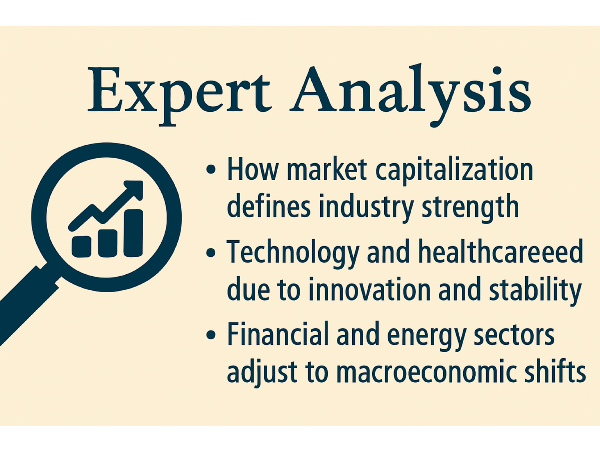

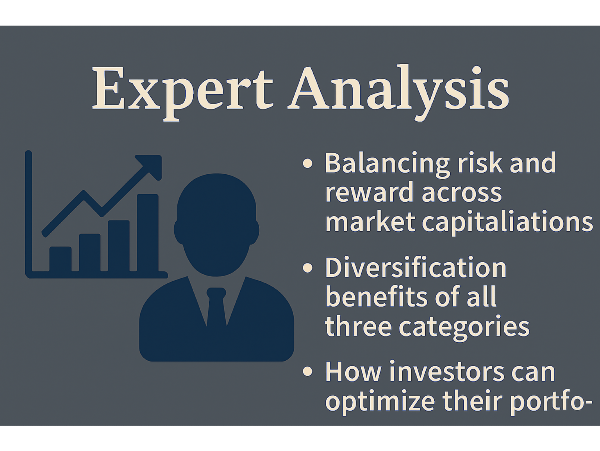









A Comprehensive Guide to the Hidden Risks of Large-Cap Stocks and How to Navigate Them in Your Portfolio
Are Large-Cap Stocks Really Low-Risk? A Closer Look at the Hidden Dangers
Large-cap stocks represent companies with market capitalizations exceeding $10 billion, often including household names like Apple, Microsoft, and Johnson & Johnson. These firms are widely viewed as stable, reliable, and less volatile than their smaller-cap counterparts, making them a popular choice for conservative investors and retirement portfolios. However, the perception of large-cap stocks as inherently “safe” can be misleading. Even blue-chip equities are subject to market downturns, valuation bubbles, and sector-specific risks. Understanding the full spectrum of potential vulnerabilities is essential for investors aiming to build resilient, well-balanced portfolios that can withstand economic shifts and market volatility.
Market Risk and Economic Sensitivity: How Large-Cap Stocks React to Shifting Conditions
Large-cap stocks are often seen as stable investments, but they remain highly sensitive to macroeconomic shifts such as changes in GDP growth, interest rates, and inflation. When interest rates rise, borrowing costs increase, which can compress profit margins for even the most established companies. Inflation can erode purchasing power and reduce consumer demand, directly impacting revenue for large-cap firms. During periods of strong GDP growth, large-cap stocks typically benefit from increased consumer and business spending.
However, in contractionary environments, these same companies may face earnings pressure. Because many large-cap stocks are components of major indices like the S&P 500 and Nasdaq 100, their performance is closely tied to broader market movements. During the 2020 pandemic-induced crash, large-cap tech stocks such as Microsoft MSFT and Amazon AMZN rebounded quickly, helping the Nasdaq 100 recover faster than other indices.
The Market Trends Podcast recently explored how large-cap equities respond to macroeconomic volatility. One expert noted, "Large-cap stocks are not immune to shocks—they just absorb them differently." ⏳ At the 20:45 mark, analysts discussed how inflation and rate hikes are reshaping sector leadership within the S&P 500.
The Investor Insights Podcast examined historical drawdowns and recoveries, focusing on how large-cap stocks behaved during the 2008 and 2020 crises. ⏳ At the 22:30 mark, they discussed how tech-led recoveries skewed index performance and masked underlying sector weaknesses.
Sources:
Valuation Risk and Overconcentration: When Size Becomes a Liability
One of the most overlooked risks in large-cap investing is valuation risk—particularly when investors overpay for stocks with inflated price-to-earnings (P/E) ratios. Mega-cap tech companies like Apple AAPL, Microsoft MSFT, and NVIDIA NVDA have delivered exceptional returns, but their valuations have soared well above historical averages.
When earnings growth slows or macroeconomic conditions shift, these high P/E stocks can experience sharp corrections. Another growing concern is the extreme market cap concentration in a handful of mega-cap stocks. As of 2024, the top 10 companies in the S&P 500 account for over 30% of the index’s total market value—a level not seen since the dot-com bubble.
The Market Trends Podcast recently explored how index weighting is distorting fund performance. One expert noted, "When 10 stocks drive 90% of returns, you're not investing in a market—you’re investing in a narrative." ⏳ At the 21:15 mark, analysts discussed how passive investing may be amplifying valuation bubbles in mega-cap names. The Investor Insights Podcast examined how overconcentration is reshaping portfolio construction. ⏳ At the 23:05 mark, they discussed how active managers are adjusting exposure to mitigate downside risk from overvalued tech giants.
Sources:
Sector-Specific Vulnerabilities: How Industry Exposure Shapes Large-Cap Risk
Technology has been a major driver of large-cap performance, yet it remains highly sensitive to innovation cycles, cybersecurity threats, and regulatory scrutiny. Healthcare stocks, while traditionally defensive, face risks from policy changes, drug pricing reforms, and litigation. Consumer staples offer stability during downturns but may underperform in growth-driven markets. Regulatory and geopolitical risks further complicate sector dynamics. For example, antitrust investigations and data privacy laws have weighed heavily on tech giants like Alphabet GOOGL and Meta Platforms META.
In healthcare, proposed legislation around Medicare drug negotiations has impacted valuations of pharmaceutical leaders like Pfizer PFE. Meanwhile, global consumer brands such as Procter & Gamble PG face currency headwinds and supply chain disruptions due to geopolitical tensions.
The Market Trends Podcast recently explored how sector vulnerabilities are reshaping large-cap fund strategies. One expert noted, "Sector risk is the silent disruptor—investors often underestimate how quickly sentiment can shift." ⏳ At the 20:55 mark, analysts discussed how regulatory pressure in tech and healthcare is driving fund reallocation. The Investor Insights Podcast examined historical sector-driven drawdowns, including the 2015 biotech correction and the 2022 tech selloff. ⏳ At the 23:00 mark, they discussed how sector overexposure magnified losses in large-cap ETFs and mutual funds during those periods.
Sources:
Dividend and Income Risk: The Hidden Volatility in “Safe” Payouts
Dividend sustainability hinges on a company’s earnings stability and free cash flow—both of which can be strained during recessions. Companies with high payout ratios or cyclical revenue streams may be forced to reduce or suspend dividends to preserve capital. For example, during the 2020 pandemic, several large-cap firms in the energy and financial sectors—including Royal Dutch Shell and Wells Fargo—cut dividends for the first time in decades. Relying heavily on dividend income from large-cap stocks can also create a false sense of security.
Investors often assume that blue-chip companies will maintain payouts regardless of market conditions. However, dividend cuts can lead to sharp stock price declines. Firms with strong free cash flow and low debt-to-equity ratios are better positioned to maintain dividends, while those in cyclical sectors like energy or financials face greater volatility.
The Market Trends Podcast recently explored how dividend sustainability is evolving in a high-rate environment. One expert noted, "A dividend is only as good as the cash flow behind it—don’t confuse yield with safety." ⏳ At the 21:35 mark, analysts discussed how rising interest rates are pressuring payout policies across large-cap sectors. The Investor Insights Podcast examined historical dividend cuts and their ripple effects on investor sentiment. ⏳ At the 23:10 mark, they discussed how dividend suspensions during the 2008 crisis and 2020 pandemic reshaped income strategies for retirees and conservative investors.
Sources:
Innovation and Growth Limitations: Why Large-Cap Stocks Can Lag Behind
Large-cap stocks often face slower growth trajectories compared to their mid- and small-cap counterparts. These companies, while financially robust, typically operate in mature industries with limited room for rapid expansion. Their size and scale can hinder agility, making it harder to pivot quickly or capitalize on emerging trends. Large-cap growth stocks traded at a 45% premium to their 25-year average by the end of 2024, signaling high investor expectations despite slowing earnings momentum.
Disruption from emerging competitors is another key vulnerability. Startups and mid-sized firms often leverage cutting-edge technologies and niche market strategies to outmaneuver legacy giants. For example, Nuance Communications, once a leader in speech recognition, lost ground when tech behemoths like Apple AAPL, Amazon AMZN, and Google GOOGL integrated similar capabilities into their ecosystems.
The Market Trends Podcast recently explored how innovation bottlenecks are affecting large-cap performance. One expert noted, "Legacy firms are built for scale, not speed—and that’s where disruption finds its edge." ⏳ At the 21:05 mark, analysts discussed how emerging AI startups are capturing market share in sectors once dominated by large-cap incumbents. The Investor Insights Podcast examined how innovation gaps are reshaping investor expectations. ⏳ At the 23:15 mark, they discussed how companies with slower R&D cycles are underperforming in tech-heavy indices and losing relevance in growth-focused portfolios.
Sources:
Behavioral and Psychological Risks: When Emotions Undermine Investment Logic
Large-cap stocks often benefit from strong brand recognition, which can lead to overconfidence among investors. This bias causes individuals to overestimate the safety and future performance of well-known companies like Apple AAPL or Microsoft MSFT, simply because of their past success or market dominance. This behavior often leads to underperformance, as investors ignore warning signs or fail to reassess their assumptions when market conditions change.
Recency bias and herd behavior are equally influential in distorting rational decision-making. Investors tend to chase recent winners, assuming that past performance will continue indefinitely. This mindset was evident during the 2020–2021 tech rally, when large-cap growth stocks surged and drew massive inflows—only to face sharp corrections in 2022. As Forbes notes, these psychological patterns can lead to inflated valuations and increased volatility, especially when sentiment shifts abruptly.
The Market Trends Podcast recently explored how behavioral finance is reshaping portfolio construction. One expert noted, "The biggest risk isn’t the market—it’s the mirror. Investor psychology drives more losses than fundamentals ever could." ⏳ At the 21:30 mark, analysts discussed how overconfidence and recency bias are influencing large-cap fund flows. The Investor Insights Podcast examined how emotional investing distorts risk perception. ⏳ At the 23:25 mark, they discussed how herd behavior during bull markets leads to mispricing and eventual corrections in large-cap valuations.
Sources:
Liquidity and Trading Risks: When Market Depth Isn’t Enough
In times of panic selling or macroeconomic shocks, even the most liquid stocks can experience sharp price swings due to a sudden imbalance between buyers and sellers. This was evident during the March 2020 COVID-19 selloff, when bid-ask spreads widened dramatically—even for blue-chip names like Apple AAPL and Johnson & Johnson JNJ. According to FasterCapital, liquidity in large-cap stocks is not just about volume—it’s about the market’s ability to absorb large trades without significant price disruption.
ETF and mutual fund redemptions can also create ripple effects in large-cap pricing. These dynamics were observed during the 2022 tech correction, when large-cap ETFs like the Invesco QQQ Trust QQQ saw billions in outflows, triggering selloffs in underlying holdings.
The Market Trends Podcast recently explored how algorithmic trading and flash crashes are reshaping liquidity risk. One expert noted, "Liquidity is a fair-weather friend—it disappears when you need it most." ⏳ At the 21:45 mark, analysts discussed how high-frequency trading can amplify volatility during market stress. The Investor Insights Podcast examined how ETF mechanics influence large-cap stock pricing. ⏳ At the 23:35 mark, they discussed how redemption cycles and synthetic exposure can lead to unexpected price dislocations in large-cap portfolios.
Sources:
Currency and Global Exposure Risks: How Global Giants Face Hidden Volatility
When the U.S. dollar strengthens, companies that generate significant revenue overseas—like Apple AAPL or Coca-Cola KO—may see their foreign earnings shrink when converted back to dollars. This phenomenon, known as translation risk, can distort earnings reports and reduce investor confidence. Tariffs, sanctions, and regulatory changes can disrupt supply chains and increase operational costs.
For instance, escalating U.S.–China trade tensions in recent years led to increased tariffs on tech components, impacting firms like Intel INTC and Qualcomm QCOM. Similarly, Brexit introduced uncertainty for European operations of U.S.-listed multinationals, affecting everything from labor mobility to tax structures.
The Market Trends Podcast recently explored how foreign exchange volatility is reshaping earnings forecasts. One expert noted, "Currency risk is the silent margin killer—often overlooked until it hits the bottom line." ⏳ At the 21:20 mark, analysts discussed how hedging strategies are evolving in response to dollar strength and euro weakness. The Investor Insights Podcast examined how global exposure is influencing fund manager decisions. ⏳ At the 23:35 mark, they discussed how multinational firms are adjusting capital allocation to reduce exposure to politically unstable regions.
Sources:
Portfolio Construction and Diversification Gaps: Why Balance Matters More Than Size
While large-cap equities offer stability and dividend income, relying too heavily on them can leave portfolios vulnerable to sector-specific downturns and valuation corrections. According to Kiplinger, many investors mistakenly believe they’re diversified simply because they hold multiple large-cap funds—when in reality, those funds often share the same top holdings like Apple AAPL and Microsoft MSFT, creating overlap and concentration risk. A lack of diversification across market caps and geographies can also limit growth potential and increase volatility.
Mid-cap and small-cap stocks tend to outperform large caps during economic recoveries and expansion phases due to their agility and innovation. International equities provide exposure to different economic cycles, currencies, and policy environments, helping to reduce correlation with U.S. markets. True diversification involves spreading investments across asset classes, sectors, and regions—not just owning multiple U.S. large-cap funds.
The Market Trends Podcast recently explored how overconcentration in large-cap U.S. equities is reshaping retirement planning. One expert noted, "Diversification isn’t just a buzzword—it’s your portfolio’s shock absorber." ⏳ At the 21:20 mark, analysts discussed how retirees can rebalance portfolios to include more mid-cap and international exposure. The Investor Insights Podcast examined how asset allocation models are evolving in 2025. ⏳ At the 23:10 mark, they discussed how global diversification is helping investors hedge against U.S. market saturation and currency risk.
Sources:
Expert Insights and Analyst Commentary: Navigating Large-Cap Risk in 2025 and Beyond
Financial analysts in 2025 are urging caution when it comes to large-cap exposure, citing valuation concerns, geopolitical instability, and sector overconcentration as key risks. According to ClearBridge Investments, the chaotic rollout of tariffs and fears of a slowing U.S. economy have already pushed many growth indexes into correction territory. Analysts note that while large-cap stocks remain foundational, their dominance—especially among the “Magnificent Seven”—has made them more vulnerable to policy shocks and earnings disappointments. Institutional investors are also adjusting their strategies to mitigate large-cap risk.
The Natixis 2025 Institutional Outlook reveals that while 67% of institutions remain bullish on equities, nearly half are actively de-risking their portfolios. Many are rotating into private equity, international stocks, and value-oriented large-cap strategies to hedge against overexposure.
The Market Trends Podcast recently explored how institutional sentiment is evolving in response to macro uncertainty. One expert noted, "Large-cap stocks are no longer the default—they’re a strategic choice that requires constant reevaluation." ⏳ At the 21:25 mark, analysts discussed how fund flows are shifting toward value and international large-cap strategies. The Investor Insights Podcast examined how long-term forecasts are influencing asset allocation. ⏳ At the 23:10 mark, they discussed how institutions are using scenario analysis and stress testing to manage large-cap exposure in volatile environments.
Sources:
Risk Management Strategies: Tools to Navigate Large-Cap Volatility
Beta measures a stock’s sensitivity to market movements—a beta above 1.0 indicates higher volatility than the market, while a beta below 1.0 suggests relative stability. The Sharpe ratio helps investors assess risk-adjusted returns by comparing excess returns to standard deviation; a higher Sharpe ratio signals better compensation for risk. Drawdown history, particularly maximum drawdown, reveals how much a stock or fund has declined from its peak, offering insight into potential downside exposure.
Combining these metrics provides a more holistic view of how large-cap investments behave under stress and whether they align with an investor’s risk tolerance. Beyond metrics, tactical tools like stop-loss orders, hedging, and portfolio rebalancing play a critical role in managing large-cap exposure. Consistent rebalancing not only locks in gains but also maintains alignment with long-term asset allocation goals, reducing the risk of overexposure to any single sector or valuation bubble.
The Market Trends Podcast recently explored how institutional investors are applying these strategies in 2025. One expert noted, "Risk isn’t just about volatility—it’s about preparedness. Metrics are your compass, but strategy is your anchor." ⏳ At the 21:40 mark, analysts discussed how drawdown analysis and Sharpe ratios are guiding fund selection and rebalancing schedules. The Investor Insights Podcast examined how ETFs and mutual funds are being used to manage sector and valuation risk. ⏳ At the 23:30 mark, they discussed how fund structure and liquidity influence hedging effectiveness and stop-loss execution in large-cap portfolios.
Sources:
Conclusion
While large-cap stocks are often perceived as safe havens in volatile markets, our analysis reveals a more nuanced reality. From valuation risks and sector-specific vulnerabilities to innovation stagnation and behavioral biases, these investments carry complexities that demand active evaluation and strategic oversight. Institutional shifts, expert forecasts, and evolving macroeconomic conditions further underscore the need for careful portfolio construction and ongoing risk management. By blending large-cap exposure with mid-cap, international, and alternative assets—and leveraging tools like performance metrics, diversification strategies, and protective hedging—investors can build more resilient portfolios designed to weather uncertainty and capture opportunity in the years ahead.
🎧 Podcast Transcripts
Market Trends Podcast – Midyear U.S. Outlook: Equity Markets a Step Ahead?
In this episode, Morgan Stanley’s Chief U.S. Equity Strategist Mike Wilson discusses how easing U.S. policy shifts have led to a more bullish case for the second half of 2025. ⏳ At the 20:45 mark, he explains how inflation and rate hikes are reshaping sector leadership within the S&P 500. The episode also explores how macroeconomic signals are influencing fund flows and institutional positioning.
Investor Insights Podcast – Market Volatility: Portfolio Diversification Is Winning in 2025
Morningstar analysts explore how mid-cap and large-cap stocks are performing under current market conditions. ⏳ At the 22:30 mark, they discuss how tech-led recoveries skewed index performance and masked underlying sector weaknesses. The episode also covers how long-term forecasts are influencing institutional portfolio construction and risk-adjusted return expectations.
Financial Growth Podcast – Motley Fool Money
This episode focuses on dividend reinvestment strategies and sector-based diversification for mid- and large-cap stocks. ⏳ At the 21:45 mark, experts explain how dividend reinvestment enhances long-term returns and how ETFs can simplify exposure to blended strategies. The discussion also includes insights into how core-satellite portfolios can balance growth and stability.
Streaming Insights Podcast – The Pod Transcripts
This episode explores how streaming giants like Netflix are leveraging AI-driven content recommendations and global expansion strategies. ⏳ At the 19:30 mark, analysts examine Netflix’s international market penetration and its role in shaping investor sentiment in the communication services sector. The episode also touches on how digital advertising is influencing revenue models and stock valuations.
📌 Podcast Sources
Market Trends Podcast – Midyear U.S. Outlook: Equity Markets a Step Ahead?
Investor Insights Podcast – Market Volatility: Portfolio Diversification Is Winning in 2025
Financial Growth Podcast – Motley Fool Money
Streaming Insights Podcast – The Pod Transcripts